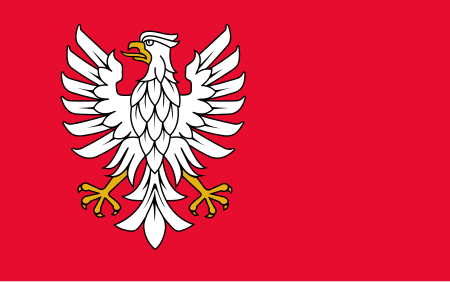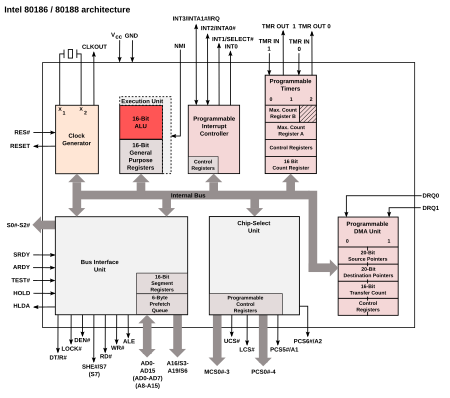Autonomic dysreflexia
| |||||||
Read other articles:

Miss Polski 2022 is the 33rd edition of Miss Polski held on July 17, 2022.[1][2][3] Agata Wdowiak of Łódź crowned Aleksandra Klepaczka of Łódź as her successor at the end of the event.[4] 33rd Miss Polski pageant Miss Polski 2022DateJuly 17, 2022VenueStrzelecki Park Amphitheater, Nowy Sącz, Małopolska, PolandBroadcasterPolsatEntrants24Placements10WithdrawalsLubuszReturnsLublinMasoviaWarmia-MasuriaPolish community in the USWinnerAleksandra Klepaczka Łódź…

Study of RNA transcripts Transcriptomics technologies are the techniques used to study an organism's transcriptome, the sum of all of its RNA transcripts. The information content of an organism is recorded in the DNA of its genome and expressed through transcription. Here, mRNA serves as a transient intermediary molecule in the information network, whilst non-coding RNAs perform additional diverse functions. A transcriptome captures a snapshot in time of the total transcripts present in a cell. …

This article relies excessively on references to primary sources. Please improve this article by adding secondary or tertiary sources. Find sources: Danú – news · newspapers · books · scholar · JSTOR (April 2008) (Learn how and when to remove this message) DanúOriginWaterford, IrelandGenresTraditional, folkYears active1995-presentMembers Benny McCarthy Nell Ní Chróinín Oisín McAuley Éamon Doorley Tony Byrne Ivan Goff Past members Tom Doorley Daire …

Bagian dari seri artikel mengenaiSejarah Jepang PeriodePaleolitiksebelum 14.000 SMJōmon14.000–300 SMYayoi300 SM – 250 MKofun250–538Asuka538–710Nara710–794Heian794–1185Kamakura1185–1333Restorasi Kemmu1333–1336Muromachi (Ashikaga) Nanboku-chōSengoku 1336–1573Azuchi–Momoyama Perdagangan dengan Nanban 1568–1603Edo (Tokugawa) SakokuPersetujuan KanagawaBakumatsu 1603–1868Meiji Perang BoshinRestorasiPerang Sino-Jepang PertamaPemberontakan BoxerPerang Rusia-Jepang 1868–1912Ta…

British prince (born 1960) Prince Andrew redirects here. For other uses, see Prince Andrew (disambiguation). Prince AndrewDuke of York (more)Andrew in 2017Born (1960-02-19) 19 February 1960 (age 64)Buckingham Palace, London, EnglandSpouse Sarah Ferguson (m. 1986; div. 1996)IssueDetail Princess Beatrice Princess Eugenie NamesAndrew Albert Christian Edward[a]HouseWindsorFatherPrince Philip, Duke of EdinburghMotherElizabeth IIEducatio…

Pour les articles homonymes, voir Pays-Bas (homonymie). Ne doit pas être confondu avec la Hollande. Royaume des Pays-Bas(nl) Koninkrijk der Nederlanden Drapeau des Pays-Bas Armoiries des Pays-Bas Devise Je maintiendrai Hymne en néerlandais : Wilhelmus van Nassouwe (« Guillaume de Nassau ») Fête nationale 27 avril[Note 1] · Événement commémoré Anniversaire du roi régnant Le Royaume des Pays-Bas en Europe (l’Union européenne en vert clair). Administratio…

1982 film by Steve Miner Friday the 13th Part IIITheatrical release posterDirected bySteve MinerWritten by Martin Kitrosser Carol Watson Based onCharactersby Victor MillerRon Kurz[1]Produced byFrank Mancuso Jr.Starring Dana Kimmell Paul Kratka Richard Brooker CinematographyGerald FeilEdited byGeorge HivelyMusic by Harry Manfredini Michael Zager ProductioncompanyJason Inc.[2]Distributed byParamount PicturesRelease date August 13, 1982 (1982-08-13) Running time95 min…

Local board of Auckland Council in New ZealandWaitākere Ranges Local BoardLocal board of Auckland CouncilCountryNew ZealandRegionAucklandTerritorial authorityAuckland CouncilWardWaitākere WardLegislated2010Government • Board chairGreg PreslandArea[1] • Land305.73 km2 (118.04 sq mi)Population (June 2023)[2] • Total55,600 Local Board Members[3]StructureFuture West4 / 6WestWards/WestWards-Independent2 / 6ElectionsLast…

هذه المقالة بحاجة لصندوق معلومات. فضلًا ساعد في تحسين هذه المقالة بإضافة صندوق معلومات مخصص إليها. لمعانٍ أخرى، طالع عبدة (توضيح). التقسيم القبائلي لجهة دكالة-عبدة عبدة هو تحالف قبائلي يقع بالمغرب وأصله عرب بني معقل، تكوّن في غرب المغرب عند نهاية الدولة المرينية.[1]…

Ultranationalist paramilitary group in Japan For the fictional version, see Black Dragon Society (comics). Black Dragon SocietyPredecessorGen'yōshaFormation1901; 123 years ago (1901)FounderUchida RyoheiFounded atJapanTypePoliticalLocationEthiopia, Turkey, Morocco, throughout Southeast Asia, South America, Europe, and the United States.FieldsPolitics Part of a series onConservatism in Japan Ideologies Capitalist Fiscal State Corporate Nationalist Minzoku Populist Shōwa S…

16-bit microcontroller Intel 80186An Intel A80186 processor in a gray ceramic packageGeneral informationLaunchedJanuary 1982; 42 years ago (1982-01)DiscontinuedSeptember 28, 2007; 16 years ago (2007-09-28)[1]Common manufacturer(s)Intel, AMD, Fujitsu, Siemens,[2] Harris, IntersilPerformanceMax. CPU clock rate6 MHz to 25 MHzFSB speeds6 MHz to 25 MHzData width16 bitsAddress width20 bitsArchitecture and classificationApplication…

Phase in U.S. electoral politics (1932–1980) Fifth Party System ← Fourth 1932–1976 Sixth → United States presidential election results between 1932 and 1960 (Fifth Party System) and 1964 to 1976 (Dealignment). Blue shaded states usually voted for the Democratic Party, while red shaded states usually voted for the Republican Party. The Fifth Party System, also known as the New Deal Party System, is the era of American national politics that began with the election of Fra…

History of segregation by race in the UKPart of a series of articles onRacial and ethnic segregation Overview Anti-miscegenation laws Crime of apartheid Allegations Caste Xenophobia Environmental / Institutional racism Ethnic nationalism Forced displacement Housing discrimination Exclusionary zoning Redlining Historical examples Australia Canada Pass system Separate schools Indian hospitals Fascist Italy French colonial empire Code Noir Indigénat Greek–Turkish population …
Il fiore delle Mille e una notte Título Las mil y una nochesFicha técnicaDirección Pier Paolo PasoliniProducción Alberto GrimaldiGuion Pier Paolo PasoliniDacia MarainiBasada en Las mil y una nochesMúsica Ennio MorriconeFotografía Giuseppe RuzzoliniMontaje Nino BaragliTatiana Casini MorigiEscenografía Dante FerrettiVestuario Danilo DonatiProtagonistas Ninetto Davoli: AzizFranco Citti: El DemonioFranco Merli: Nur Ed DinTessa Bouché: AzizaInes Pellegrini: ZumurrudMargareth Clementi: Madre d…

Bruneian footballer and executive In this Malay name, there is no surname or family name. The name Momin is a patronymic, and the person should be referred to by their given name, Ali. Ali Haji Momin Ali in 2024Personal informationFull name Mohammad Ali bin Haji MominDate of birth (1973-02-06) 6 February 1973 (age 51)Place of birth BruneiPosition(s) Defender, midfielderSenior career*Years Team Apps (Gls)1996–1999 Brunei 2000–2004 DPMM International career‡1997–2002 Brunei 13+ (0)Man…

سلالة غانغا الغربية الأرض والسكان الحكم التأسيس والسيادة التاريخ تاريخ التأسيس 350 وسيط property غير متوفر. تعديل مصدري - تعديل كانت الغانغا الغربية سلالة حاكمة هامة من كارناتاكا القديمة في الهند والتي استمرت من نحو عام 350 حتى 1000 بعد الميلاد. يُعرفون أيضًا باسم «سلالة غ…

State park in Arizona, United States Alamo Lake State ParkAlamo Lake and Artillery PeakLocation of Alamo Lake State Park in ArizonaLocationLa Paz, Arizona, United StatesCoordinates34°13′56″N 113°36′10″W / 34.23222°N 113.60278°W / 34.23222; -113.60278Area4,900 acres (20 km2)Elevation1,102 ft (336 m)[1]Established1969 (1969)Administered byArizona State ParksVisitors67,092 (in 2022)[2]LogoWebsiteazstateparks.com/a…

Cet article est une ébauche concernant une actrice chilienne. Vous pouvez partager vos connaissances en l’améliorant (comment ?) selon les conventions filmographiques. Claudia Di GirólamoClaudia Di GirólamoBiographieNaissance 30 décembre 1956 (67 ans)VitacuraNationalité chilienneDomicile SantiagoFormation Université du Chili (1975-1978)Collegi de Teatre de Barcelona (d) (2005)Activités Actrice (depuis 1978), metteuse en scène (depuis 1996), dramaturge (depuis 2011)Période d…

1842 border resolution treaty between British Canada and the United States Webster–Ashburton TreatyWebster–Ashburton Treaty ratificationTypeBilateral treatySigned9 August 1842 (1842-08-09)LocationWashington, D.C., United StatesNegotiators Daniel Webster Alexander Baring, 1st Baron Ashburton Originalsignatories United States United Kingdom Ratifiers United States United Kingdom The Webster–Ashburton Treaty, signed August 9, 1842, was a treaty that resolved several border issu…

Battle between the forces of Rome and Fidenae and Veii Battle of FidenaePart of Roman–Etruscan WarsAulus Cornelius Cossus carries the head of the Etruscan king Lars Tolumnius, 1818 engraving by Bartolomeo PinelliDate437 BCLocationAnio River and FidenaeResult Roman victoryBelligerents Roman Republic FidenaeVeiiCommanders and leaders Mamercus Aemilius MamercinusLucius Quinctius L. f. L. n. CincinnatusLucius Sergius Fidenas Lars Tolumnius The Battle of Fidenae was fought in 437 BC between the Rom…